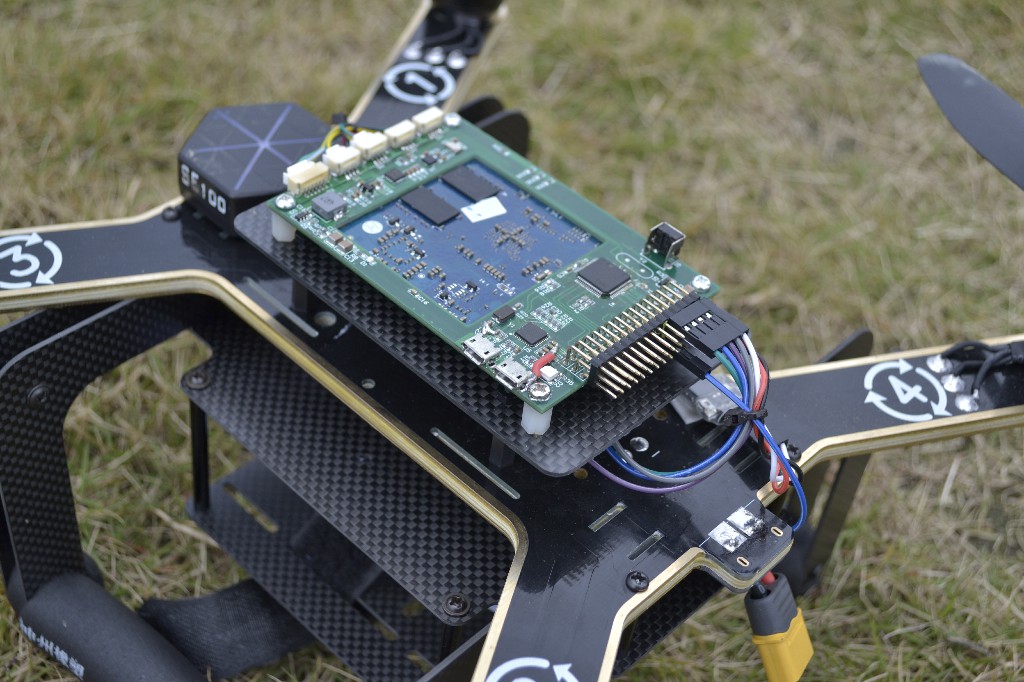Author:Xiao Qi (Amovlab Co. Ltd.)
Currently, the official Pixhawk series controllers use STM32 controllers. It is also well known that STM32 series of microcotrollers are mostly used in the consumer electronics field, and are popular around the world due to their low cost and rich data.
However, it is also widely believed that reliability in software and hardware is a major requirement in the field of aerospace and industrial control where hardware selection is a meticulous process. With the rapid development of Pixhawk open source flight control, more and more companies at home and abroad are using this open source flight controller to develop their own unmanned systems. Thus the software and hardware control system originally meant for the aircraft model level are also now being applied to the industrial control and aerospace fields.
Although the unmanned system is currently at the initial stages with the upstream and downstream industry chains not well defined, it is still believed that this is not a healthy trend. This is because the demand for unmanned systems has sharply increased against an inadequate human resource for this and related industries, and while the scale of the industry continues to grow, it is still far from being as perfect as the automobile industry.
Based on the above mentioned observations, we completely ported the Ardupilot system to the Freescale IMX6 chip platform, and directly upgraded the hardware level of the Ardupilot system to the industrial level. This has greatly improved the stability of the core processor, and provided a maximum degree of guarantee for the subsequent software extension.
Ensuring the stability of the entire system at the hardware and software levels is the objective of our concerted efforts. In another article, we will also discuss in detail the current problems in the field of unmanned systems, especially drones.
1.The system features at a glance :
Product parameters
1-Basic parameters
CPU: NXP quad core i.MX6Q
Architecture: Cortex-A9
Main frequency: 1GHz
Memory: 1GB DDR3 / 2GB DDR3
ROM: 8GB eMMC
Operating System: Linux4.1.15-realtime
2.Interface
I2C: 1 way
USB HOST: 1 way USB HOST 2.0
USB OTG: 1 way USB OTG 2.0
UART/IrDA: 3 channels (including a debug serial port)
Pwm: 12 way
S.bus: 1 way
Adc: 2 way
Power supply interface: 1 way (gh1.25-6pin, 5V, 3A)
3. Available resources on the board
RGBLED: 1
Barometer: 1
Accelerometer: 2
Gyro: 2
Compass: 2
Programmable IOMCU: 1
Boot switch: 1
Software resources
1.Driver
Serial port driver:provided by linux
I2c driver: provided by linux
Adc driver: offer
Usb driver:provided by linux
Pwm driver: available
bus driver:provided by ardupilot
Gpio driver:provided by linux
Each sensor driver: provided by ardupilot
2. Application
Control program: ardupilot----open source
Communication protocol: mavlink-linux----open source
Tool chain
Linux programming: arm-linux-gnueabihf-gcc (version 5.4 or higher)
Windows programming: vs2017 (the Linux cross-compilation environment needs to be selected in the installation package)
Connect PC
Serial terminal: use usb-ttl1.8v to connect the board debug serial port and the super terminal was used to login
Usb terminal: use usb data cable to connect the board usb-otg interface, use super terminal ssh to login
Connecting to the ground station: use the usb data cable to connect the board usb-otg interface, use the ground station connection
File transfer: use usb data cable to connect the board usb-otg interface, use the super terminal sftp for file transfer
Vs online compile and debug: use usb data cable to connect the board usb-otg interface, use vs2017 to connect the board, compile single step debugging
Vs online additional debugging: use usb data cable to connect the board usb-otg interface, use vs2017 to connect the board for additional debugging.
We believe that this development platform has a number of advantages:
- The hardware processing performance has greatly improved compared with the classic official flight control, 50% to 80% of the CPU usage. The processor we transplanted has a CPU usage of about 3%, and the code has a lot of room for possible extension.
The core board of i.MX6Q quad-core processor is based on NXP (formerly Freescale) Cortex-A9 architecture
- The sensor driver under Linux, USB driver, and various supported peripherals are very resourceful, and can be easily extended to the development of advanced applications such as vision.
3 A single-step debugging development environment has been integrated making it capable of supporting single-step debugging under VS2017. The code flow of the controller is clear and is convenient for code tracking and testing.
4 The temperature adaptability, anti-complex environmental electromagnetic interference ability of the NXP industrial grade processor is stronger. Compared with the consumer processor of STM32 series MCU, the hardware advantage is self-evident.
We believe that in terms of convenience, VS2017’s integrated development environment is more friendly than that of Ubuntu and can conduct single-step debugging with much more improved efficiency. This is in line with the original objective of our company (Amovlab) which is making development more efficient. The hardware’s performance has also been greatly improved. In the future, whether it is the design of the filter, the complex controller or the image, they can all effectively meet the required specifications. This autopilot hardware system has very good prospects.
We still plan to keep up with supporting the random version of the official source code as it is the same as the Ardupilot source code. The user only needs to do secondary development on the official source code to support the random version of the official code. In this case there is no need to worry about Linux system level scheduling. However as in ordinary flight control development, you can care about algorithms and logic levels.
The following is a test description and a demonstration of a four-rotor aircraft operation:
1, development and debugging demonstration
2, takeoff / landing / hover test
- Stability of violent stroke test in self-stabilized mode (large maneuver)


